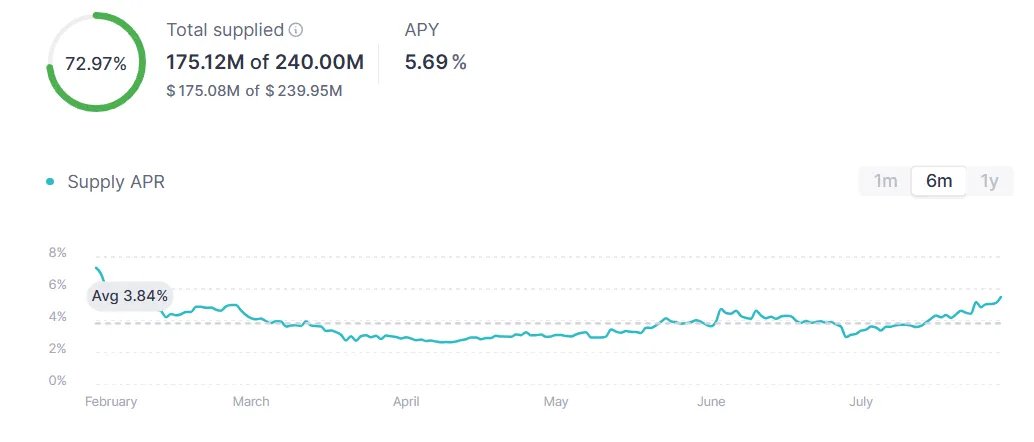Binance recently launched RWUSD, with an annual yield of up to 4.2%, which piqued my interest.
According to the official introduction, RWUSD is a capital-protected income product, benchmarked against the yield of real-world assets (RWA), such as tokenized U.S. Treasury bonds. To put it plainly, RWUSD is essentially a way to earn income by purchasing U.S. Treasury bonds. This is an extremely convenient investment method for ordinary users to gain exposure to U.S. bond yields.
The key term here is capital protection. In comparison, domestic capital-protected products yield around 2%, while the current loan interest rate domestically is also about 3%.
In Web3, the most common stablecoin investment options fall into three categories:
1) Stablecoin investments within exchanges, where the APR is mostly around 1%. This interest rate is variable and increases with the demand for borrowing USDT. However, there is a small probability risk of redemption, as there have been historical instances where immediate redemption was not possible. This can be quite stressful if you need to access funds urgently.
2) The second option is large lending platforms, such as AAVE, where their APR ranges from 2% to 4%, with significant fluctuations. This also depends on the demand for borrowing; for example, USDC on the Base chain recently surged to 5.69%, whereas it had been around 3% for a long time.
3) The third option involves smaller on-chain platforms. They often exceed 10% APR through subsidies from their own tokens. However, the risk is concerning; if something goes wrong on-chain, these small platforms may have weak risk resistance and could fail to compensate users. You might earn some interest but lose your principal.
Comparing these three mainstream stablecoin investment options, Binance's RWUSD has certain advantages:
First, in terms of APR, a 4.2% yield is relatively high and remains so for most of the time. The yield of RWUSD primarily comes from U.S. Treasury bonds, and the yield fluctuations are not as drastic as other methods.
Second, RWUSD has no on-chain risks. Although on-chain security has been improving, the risks associated with on-chain assets are still significantly higher than those of centralized exchanges. The platform you deposit into may be subject to hacking, malicious actions, or wallet theft, among other issues.
Third, having assets on Binance makes operations very convenient. Most projects are traded on Binance, so there’s no hassle of transferring back and forth, especially for someone like me who is relatively lazy, which I’m sure is not uncommon.
Of course, another issue is the redemption process.
RWUSD can be exchanged for USDC at a 1:1 ratio, and Binance does not charge any exchange fees in between. However, it is important to note that there are certain regulations for redemption. Each person has a daily redemption limit, currently set at 5000 USDC. For amounts exceeding this limit, there are two options:
If you choose immediate settlement, a fee of 0.1% will be charged on the amount exceeding the free limit, equivalent to 9 days of yield.
If you choose T+3 settlement, a fee of 0.05% will be charged, equivalent to 5 days of yield.
So this point needs to be particularly noted, especially for those with larger amounts of capital, as it may not be suitable for short-term investment. Overall, RWUSD is a very good investment product that allows us to earn from U.S. Treasury bonds.

免责声明:本文章仅代表作者个人观点,不代表本平台的立场和观点。本文章仅供信息分享,不构成对任何人的任何投资建议。用户与作者之间的任何争议,与本平台无关。如网页中刊载的文章或图片涉及侵权,请提供相关的权利证明和身份证明发送邮件到support@aicoin.com,本平台相关工作人员将会进行核查。




